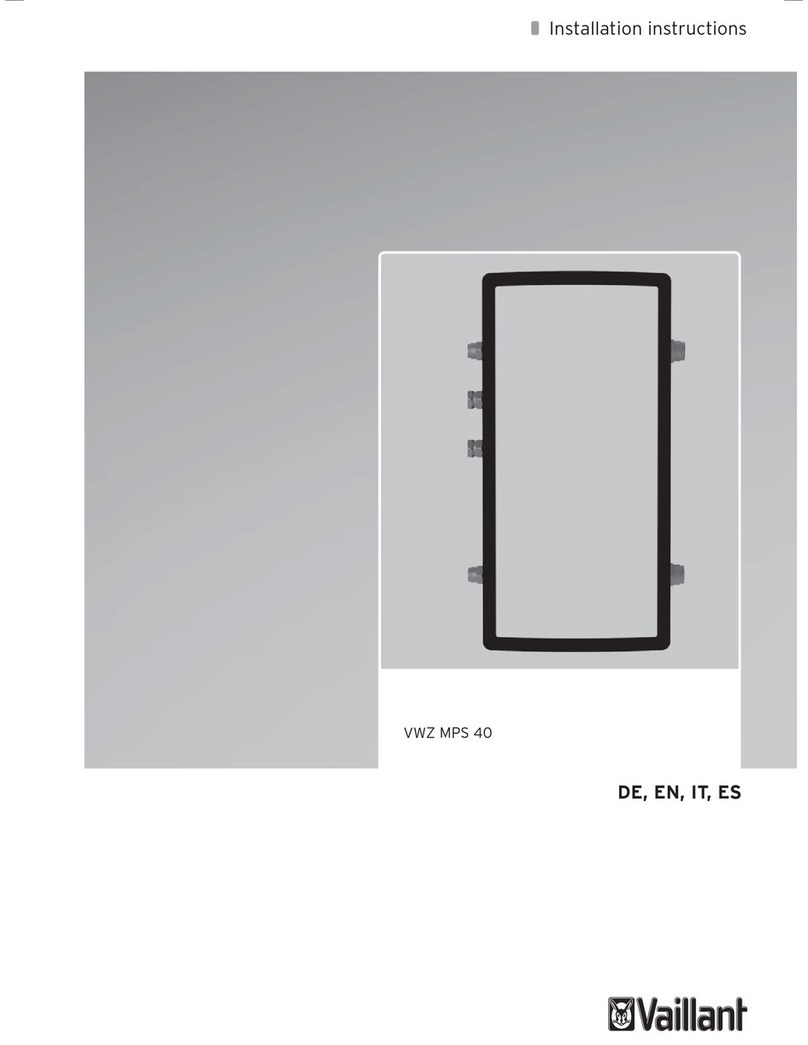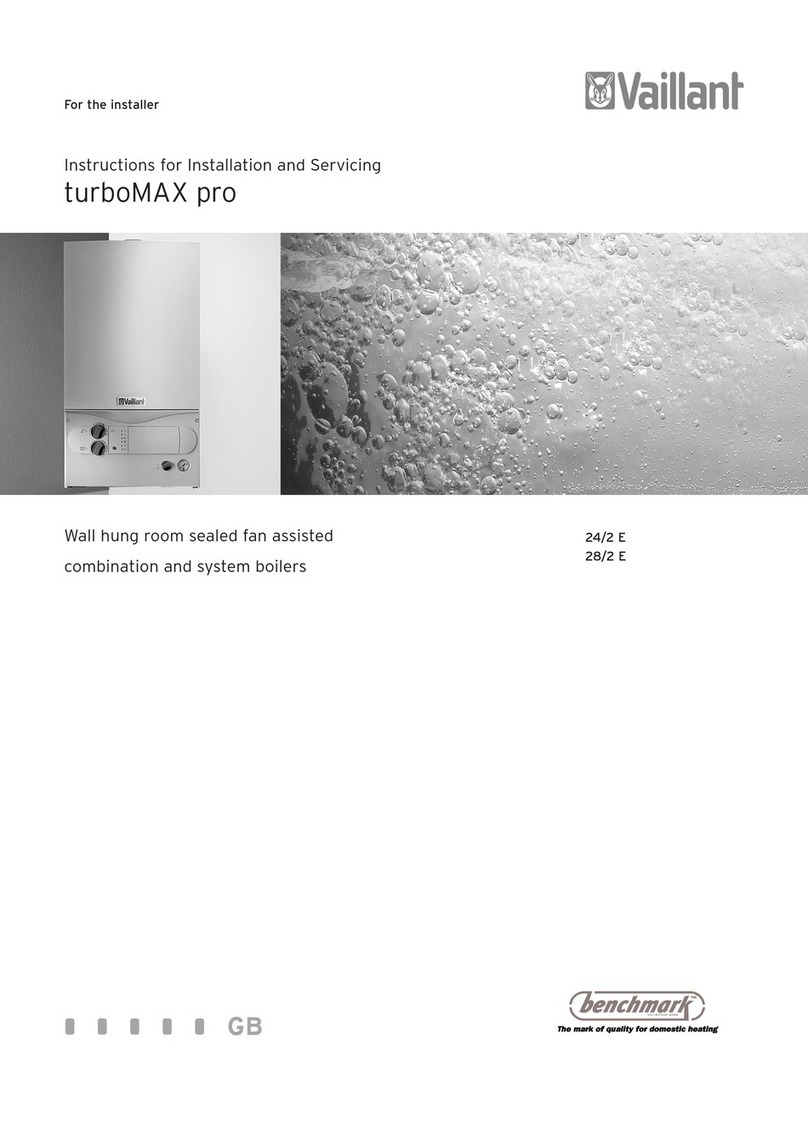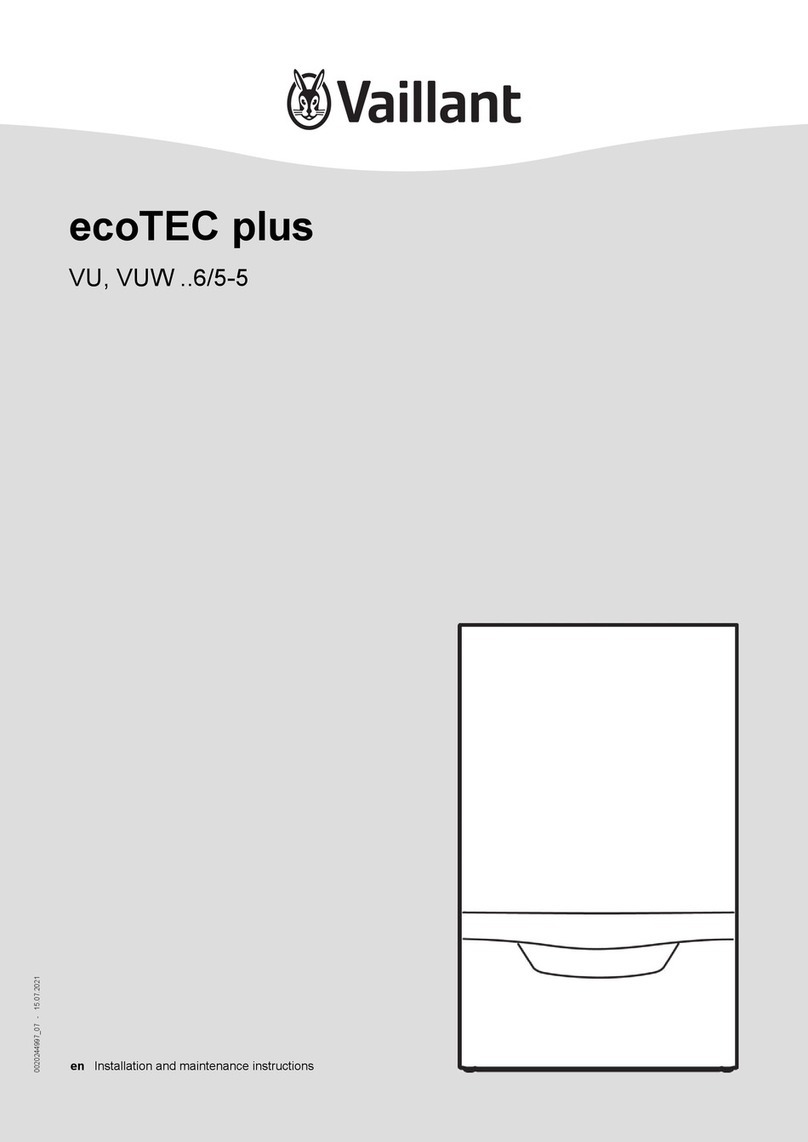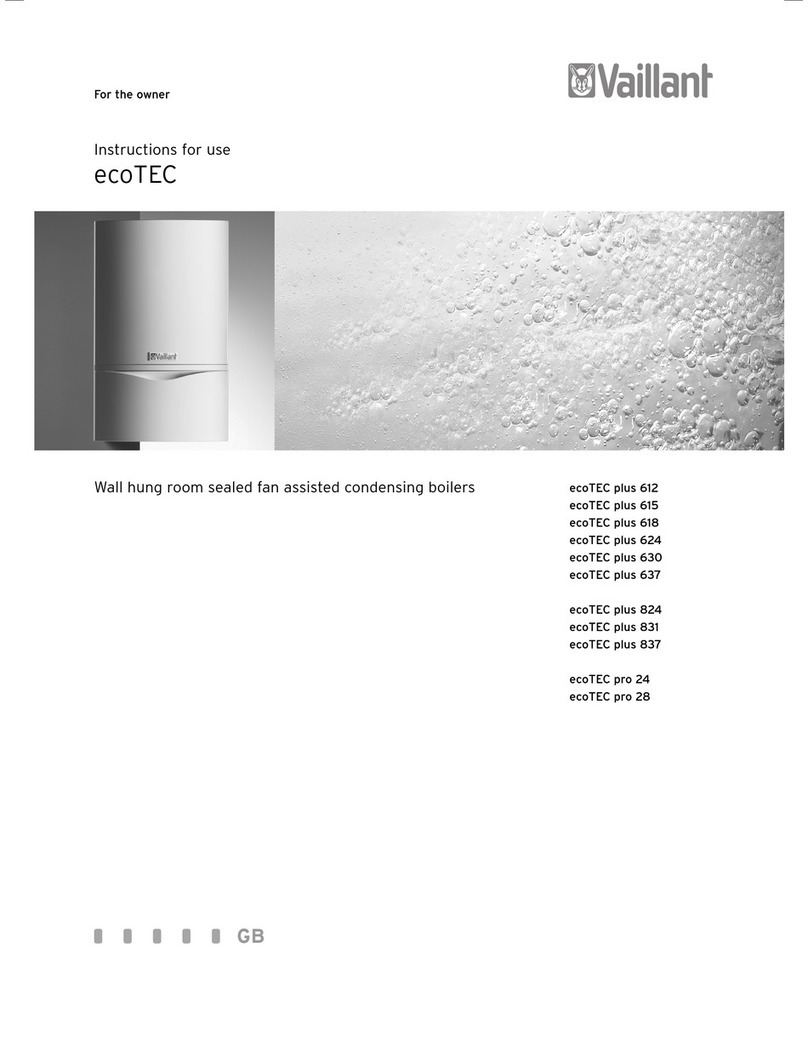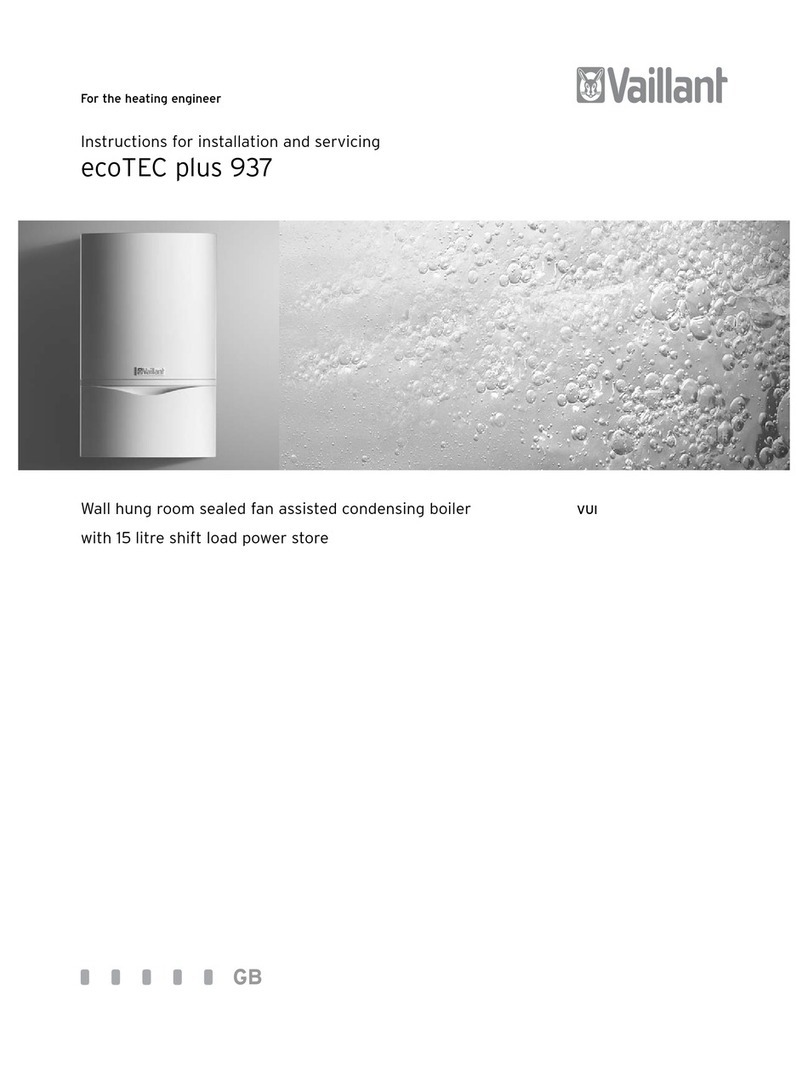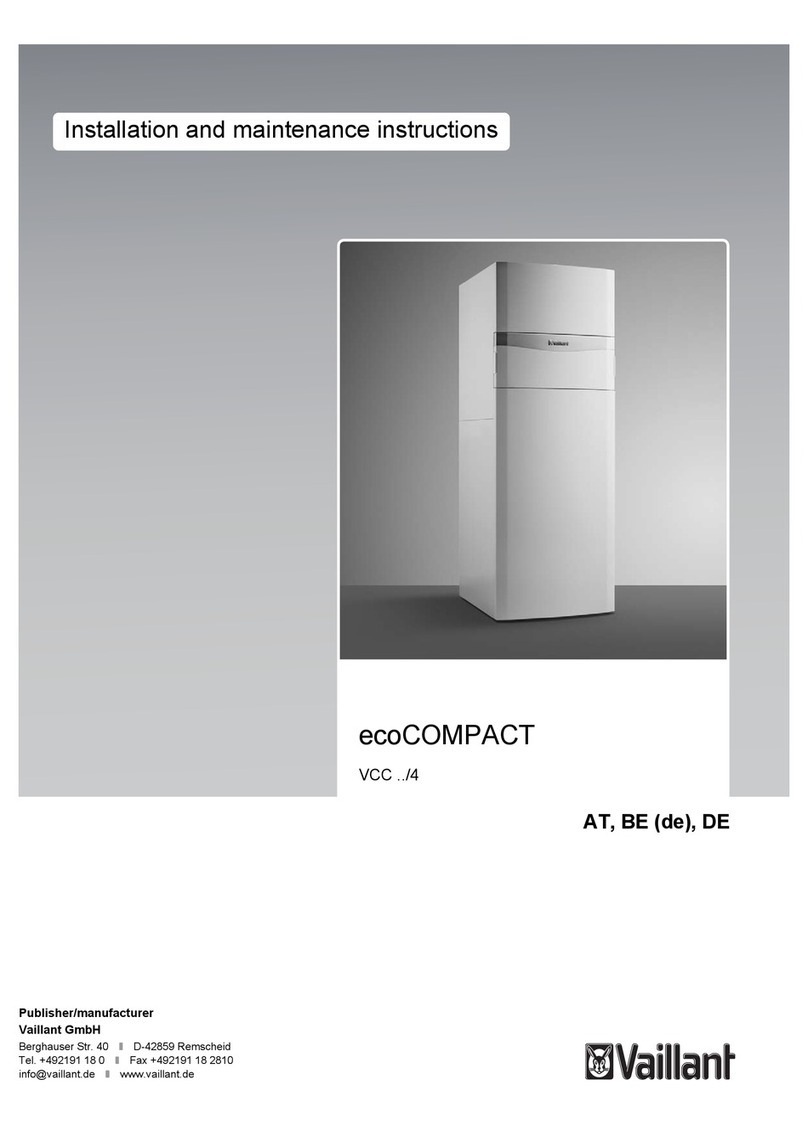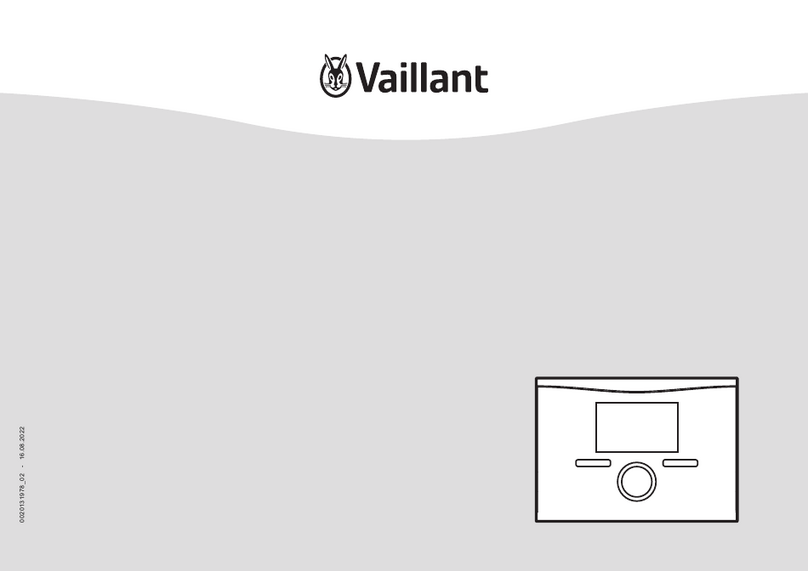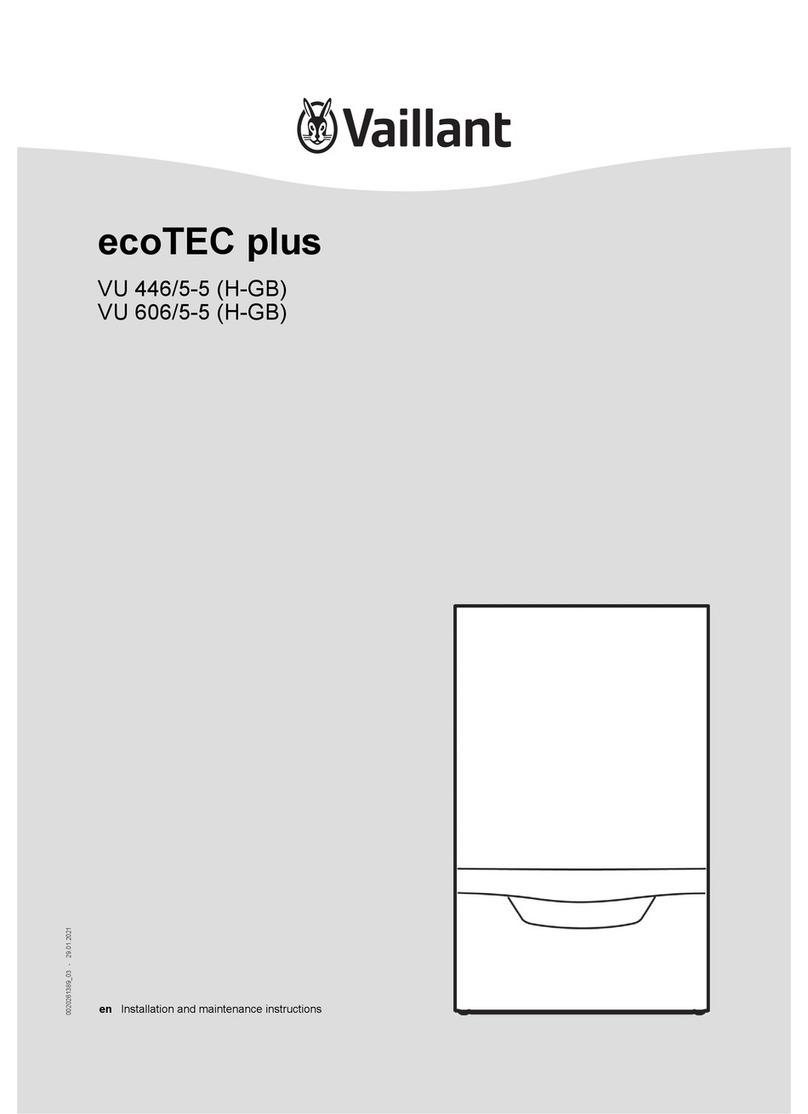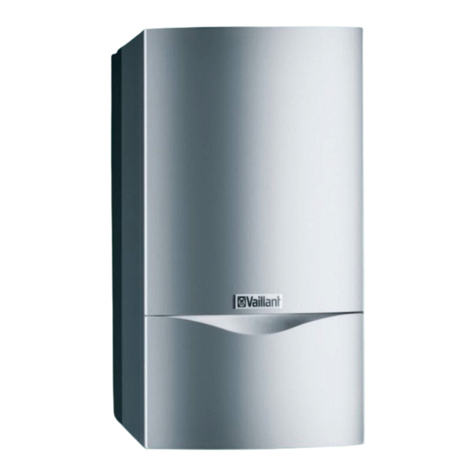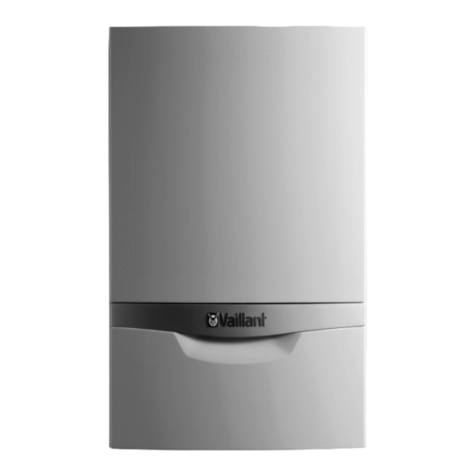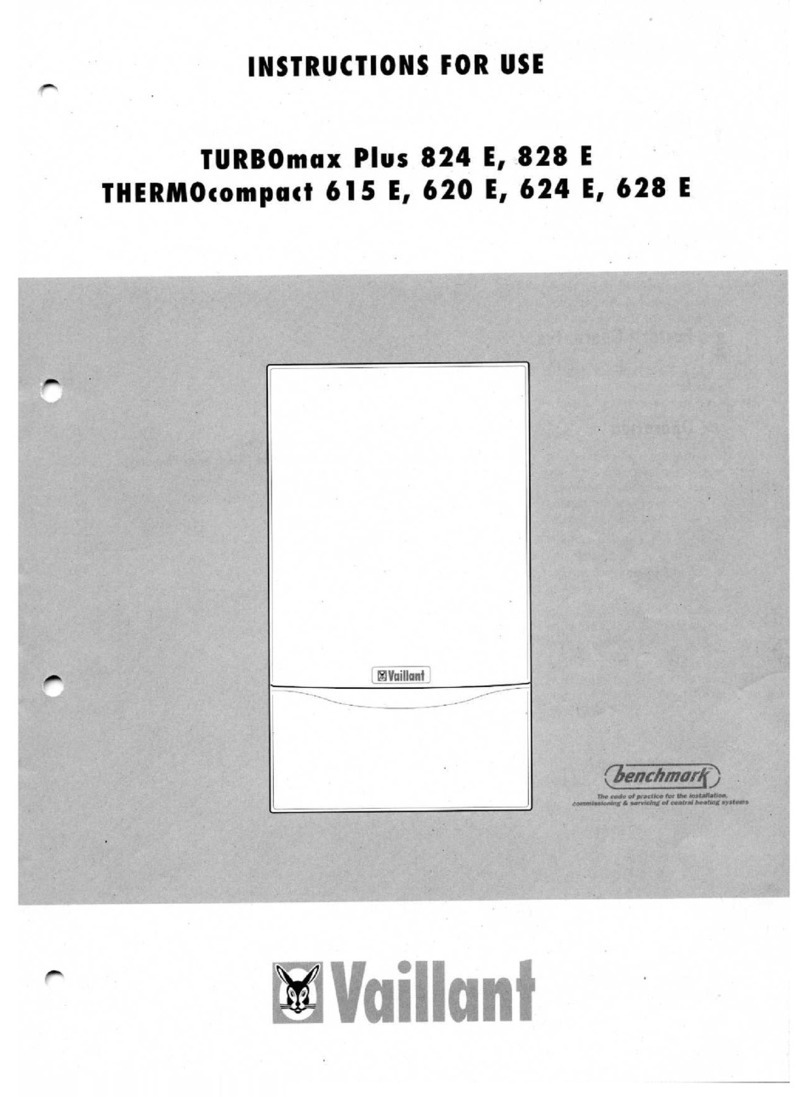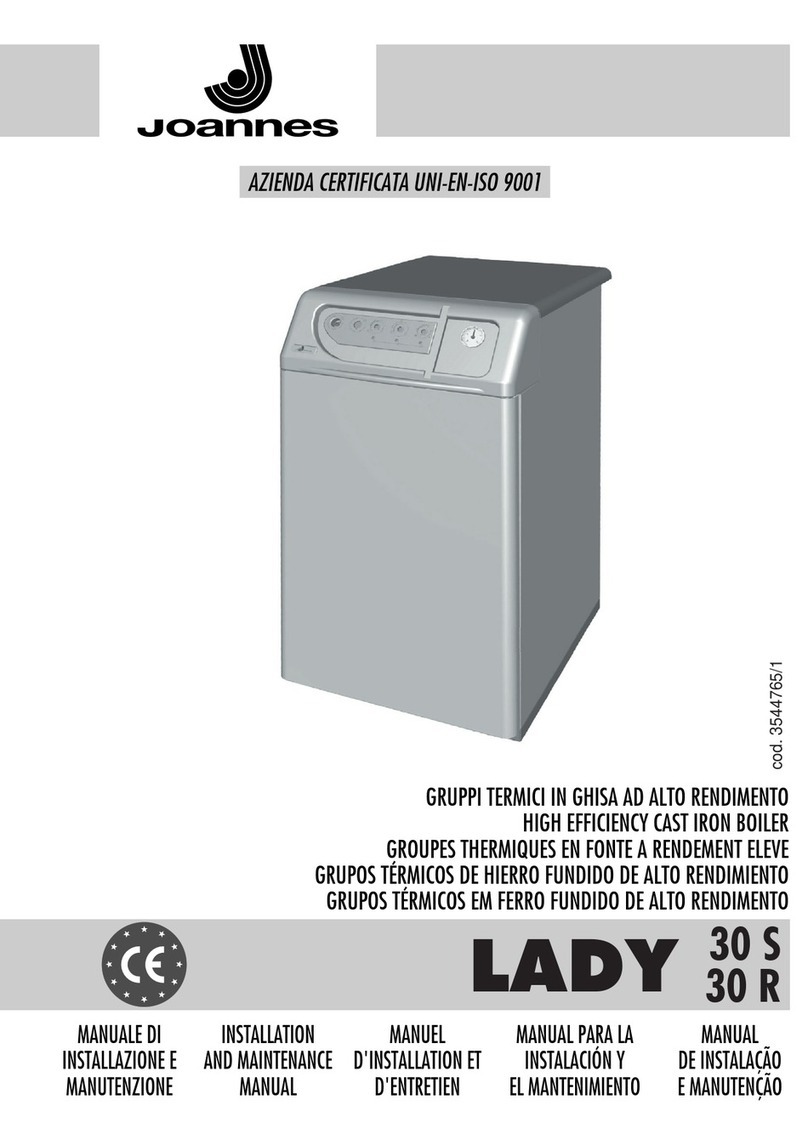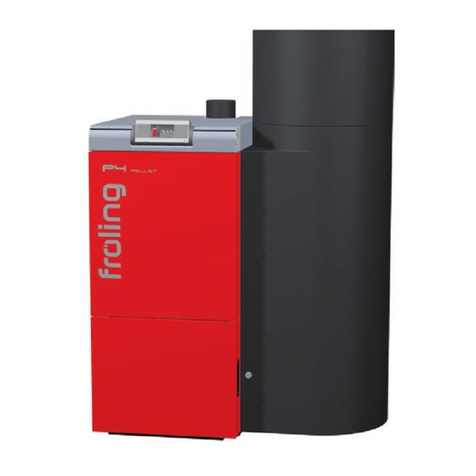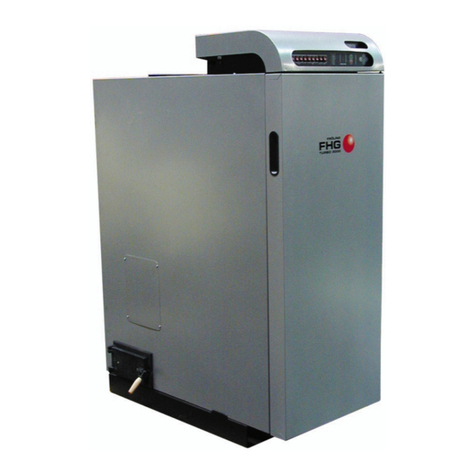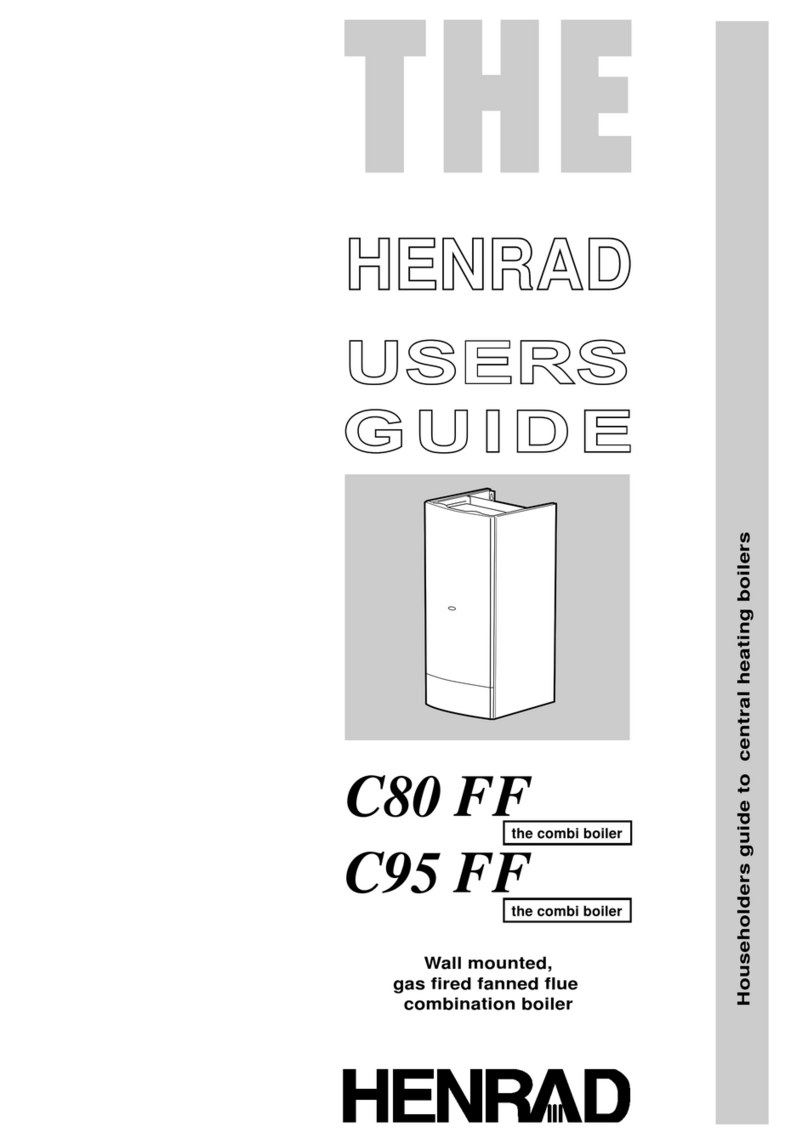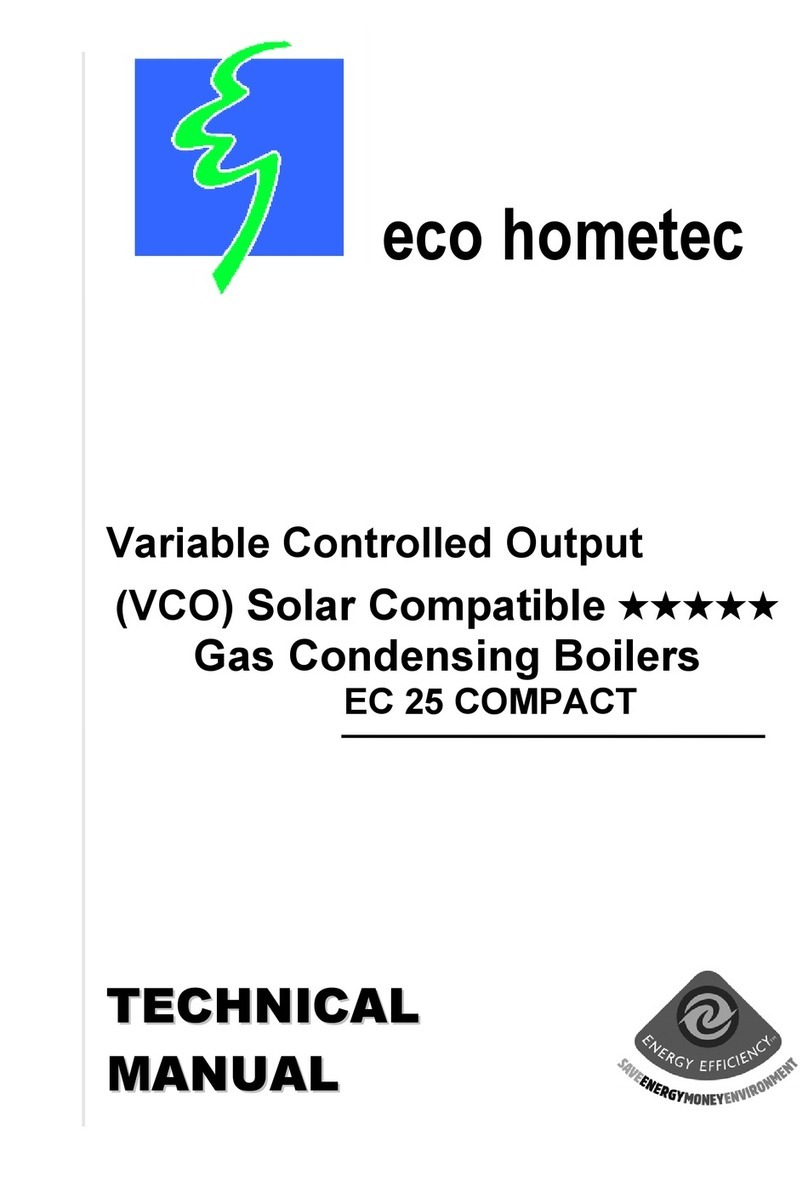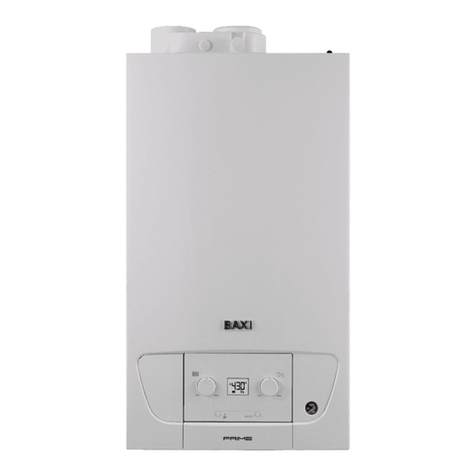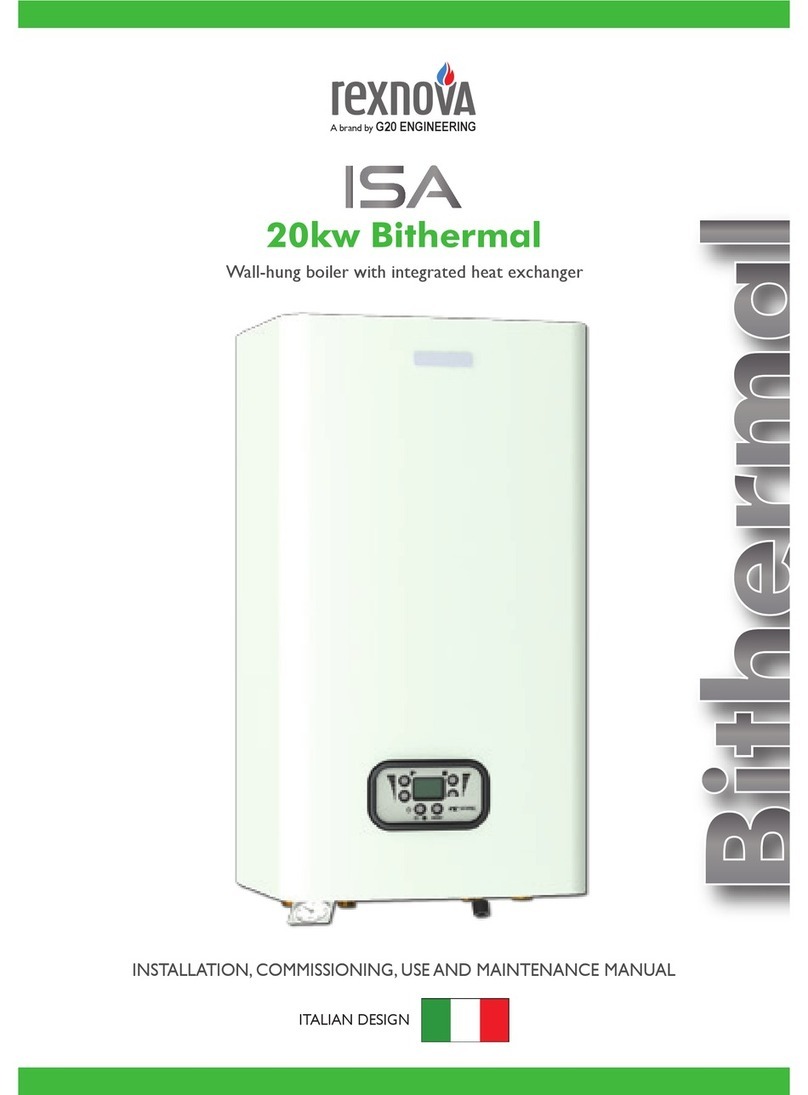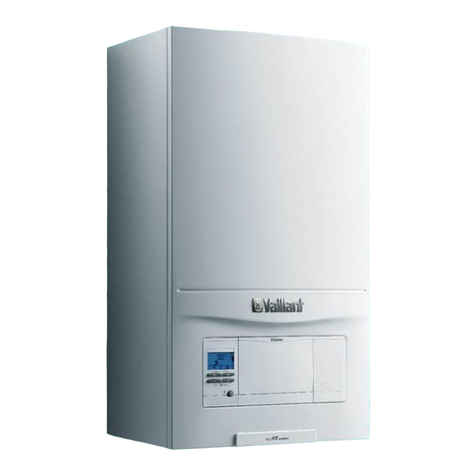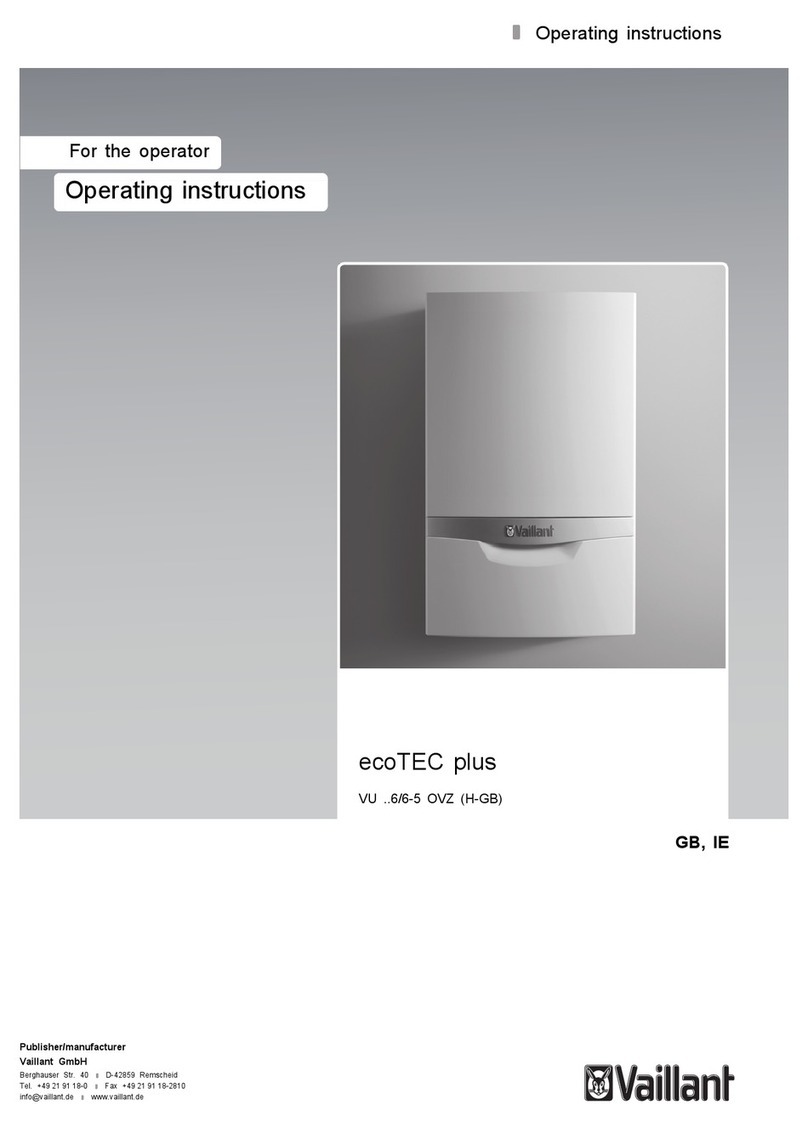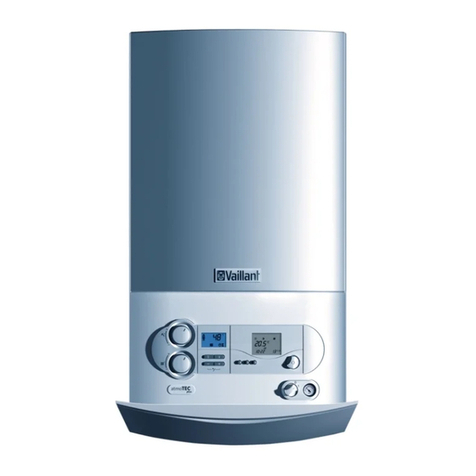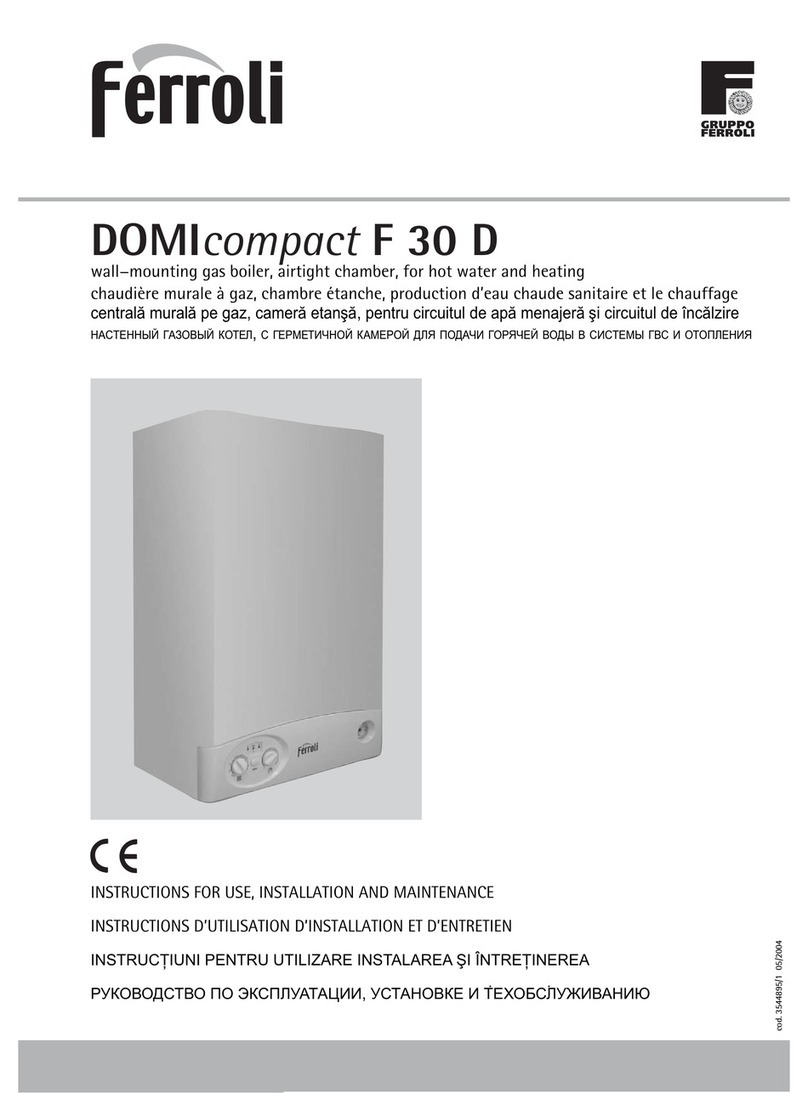
Table of contents
2Operating instructions ecoTEC plus 0020124810_FT1b
Table of contents
1 Notes on the documentation ................................3
1.1 Document storage......................................................3
1.2 Symbols used...............................................................3
1.3 Applicability of the instructions..............................3
1.4 Identification plate .....................................................3
1.5 CE label .........................................................................3
2 Safety............................................................................4
2.1 Safety and warning information .............................4
2.1.1 Classification of warnings.........................................4
2.1.2 Structure of warnings................................................4
2.2 Intended Use................................................................4
2.3 General safety instructions ......................................5
3 Equipment and functional description............... 7
3.1 Design............................................................................ 7
3.2 Function of the boiler ................................................8
3.2.1 Heating mode ..............................................................8
3.2.2 Hot water production with DHW cylinder
(VU unit)........................................................................8
3.2.3 Hot water production with VUW unit.....................8
4 Operation .....................................................................9
4.1 Overview of control elements .................................9
4.2 Display......................................................................... 10
4.3 Preparing for start-up................................................11
4.3.1 Opening the isolator devices ...................................11
4.3.2 Switching on the boiler .............................................11
4.3.3 Checking the fill level of the heating system......12
4.3.4 Filling the heating system .......................................12
4.4 Setting the heating flow temperature..................13
4.4.1 Setting the heating flow temperature
without a controller connected..............................13
4.4.2 Setting the heating flow temperature
with a controller.........................................................14
4.5 Hot water production with VUW units..................14
4.5.1 Setting the hot water temperature.......................14
4.5.2 Activating/deactivating comfort mode ................14
4.5.3 Setting storage tank charging
(with actoSTOR) .........................................................16
4.6 Hot water production with VU units.....................17
4.6.1 Setting the hot water temperature.......................17
4.7 Setting a room thermostat or weather
compensator ...............................................................17
4.8 Switching the heating system off ..........................18
4.8.1 Switching hot water production off (VU unit) ....18
4.8.2 Switching heating mode off (summer mode) .....18
4.8.3 Temporarily taking the boiler out of service ......18
4.9 Protecting the heating system against frost......19
4.9.1 Activating the frost protection function..............19
4.9.2 Draining the heating system...................................19
5 Energy saving tips................................................. 20
6 Troubleshooting.......................................................22
6.1 Reading fault codes..................................................23
6.2 Detecting and rectifying malfunctions................23
6.3 Rectifying a water shortage...................................24
6.4 Resolving ignition faults..........................................24
6.5 Resolving faults in the air/exhaust
gas pipework .............................................................25
7 Maintenance..............................................................25
7.1 Maintaining the boiler..............................................25
7.2 Caring for your boiler..............................................25
8 Decommissioning....................................................26
8.1 Disconnecting the boiler permanently................26
8.1.1 Disposing of the boiler ............................................26
8.1.2 Disposing of the packaging ....................................26
9 Manufacturer's guarantee and Vaillant
customer service ....................................................26
9.1 Vaillant Service..........................................................26
9.2 Factory guarantee ....................................................26
10 Technical data..........................................................27
Glossary ....................................................................................32
Index .........................................................................................34
